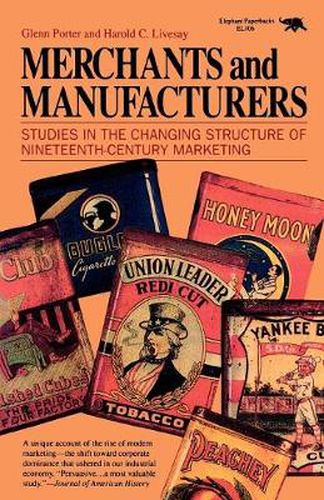Readings Newsletter
Become a Readings Member to make your shopping experience even easier.
Sign in or sign up for free!
You’re not far away from qualifying for FREE standard shipping within Australia
You’ve qualified for FREE standard shipping within Australia
The cart is loading…






In its transformation from an agrarian to an industrial economy, the United States saw a fundamental change in the marketing of manufactured goods during the 19th century. Changes in distribution were at least as important as changes in production, as the authors demonstrate in this unique account of the rise of modern marketing. Their focus is on iron, tobacco, railway supplies, and perishable goods, and they show how rising industrial capacity, the concentration of markets, and advancing technology forced new methods of distribution and the decline of independent merchants and wholesalers. By the beginning of the 20th century the outlines of a new economic order had emerged, one in which the modern corporation became the dominant institution. A splendid study in business history. And it is business history of the best kind, that which relates changes in business organizations and practice to the mainstream of economic development. -Journal of Southern History. No one before Porter and Livesay has so carefully delineated the transition from the old mercantile to the new industrial world…A good book about an important subject. -Choice.
$9.00 standard shipping within Australia
FREE standard shipping within Australia for orders over $100.00
Express & International shipping calculated at checkout
In its transformation from an agrarian to an industrial economy, the United States saw a fundamental change in the marketing of manufactured goods during the 19th century. Changes in distribution were at least as important as changes in production, as the authors demonstrate in this unique account of the rise of modern marketing. Their focus is on iron, tobacco, railway supplies, and perishable goods, and they show how rising industrial capacity, the concentration of markets, and advancing technology forced new methods of distribution and the decline of independent merchants and wholesalers. By the beginning of the 20th century the outlines of a new economic order had emerged, one in which the modern corporation became the dominant institution. A splendid study in business history. And it is business history of the best kind, that which relates changes in business organizations and practice to the mainstream of economic development. -Journal of Southern History. No one before Porter and Livesay has so carefully delineated the transition from the old mercantile to the new industrial world…A good book about an important subject. -Choice.